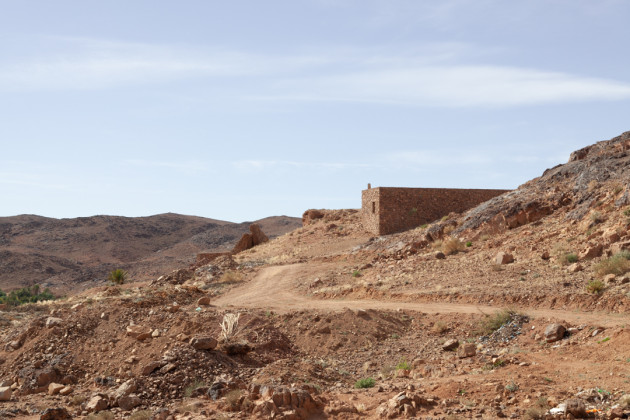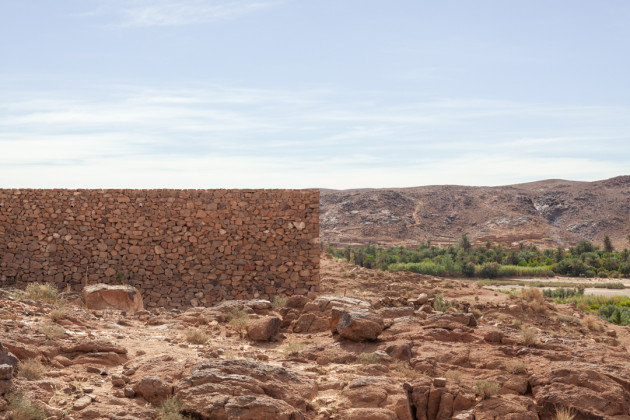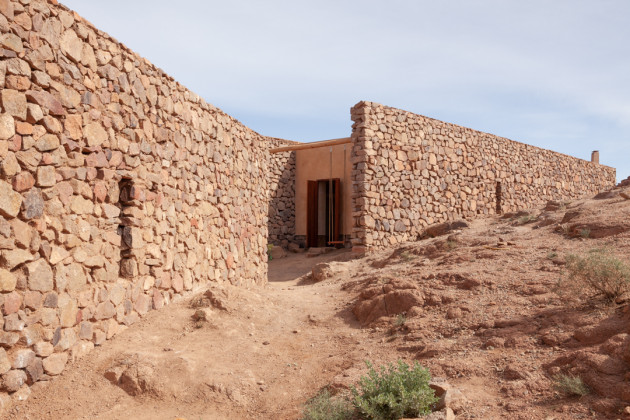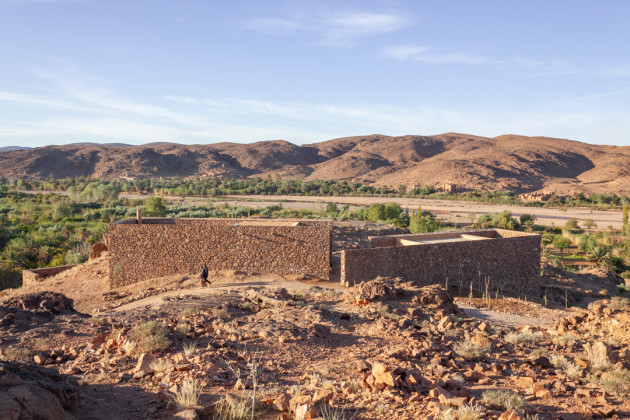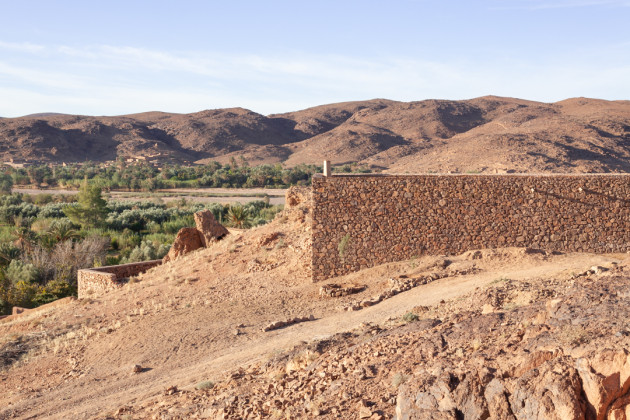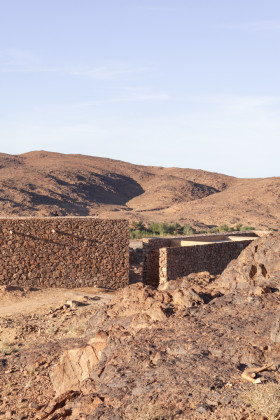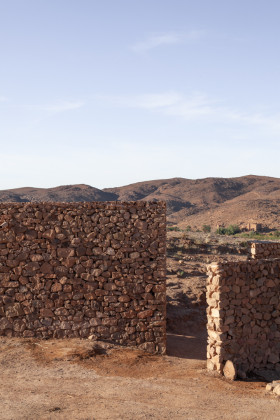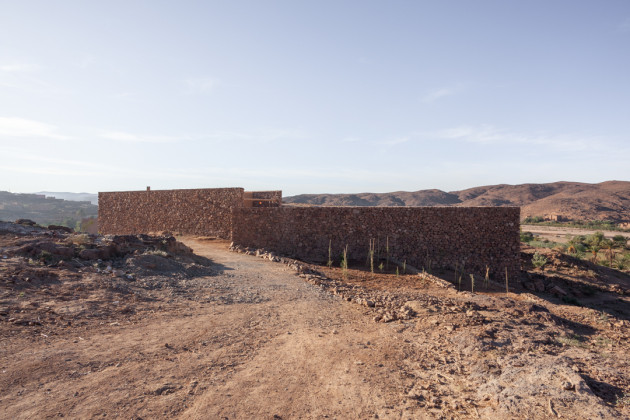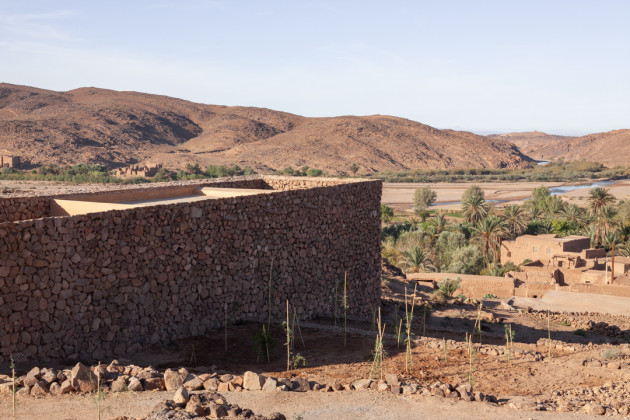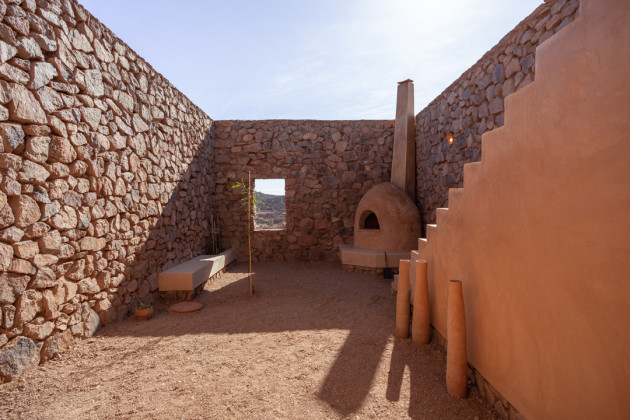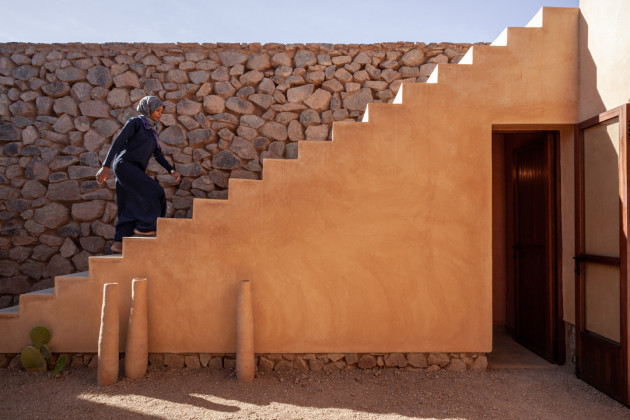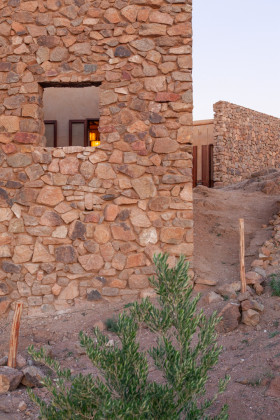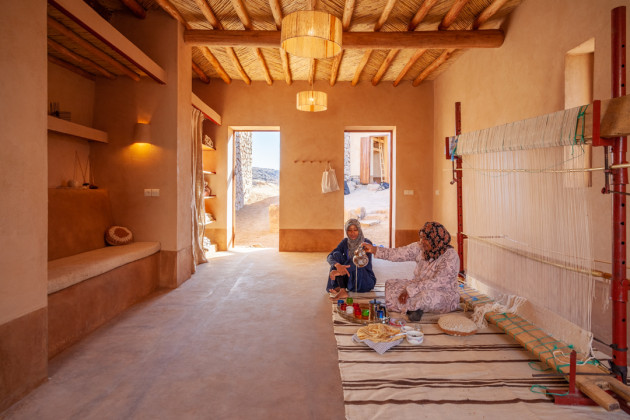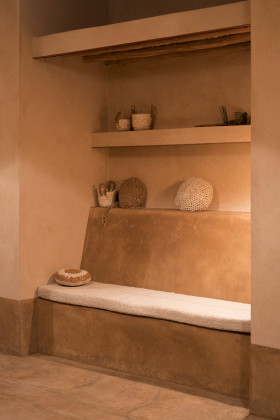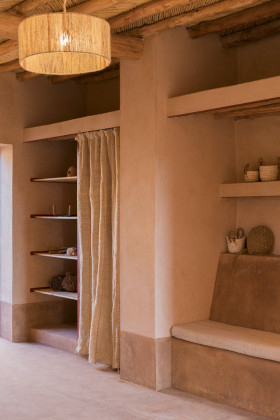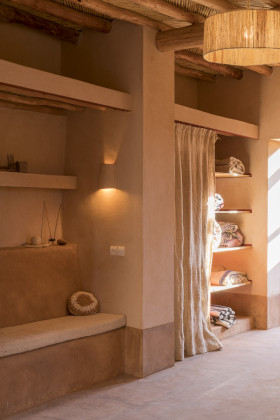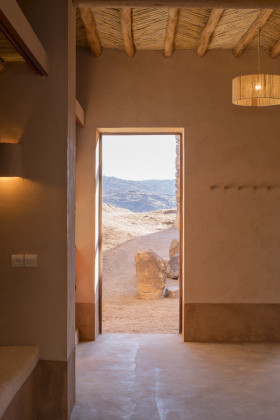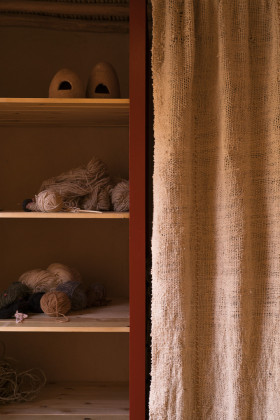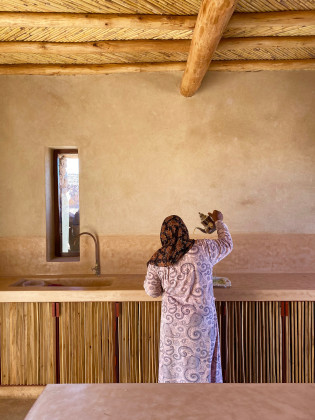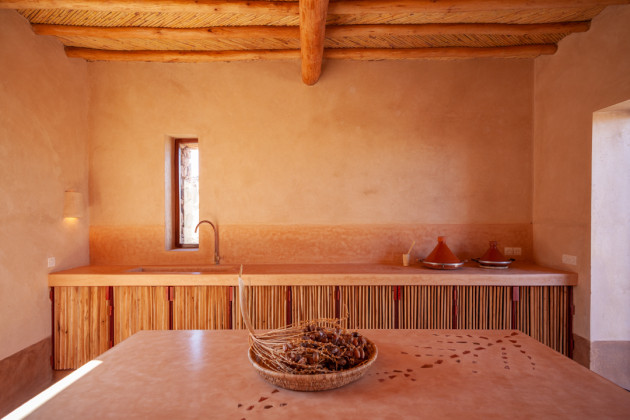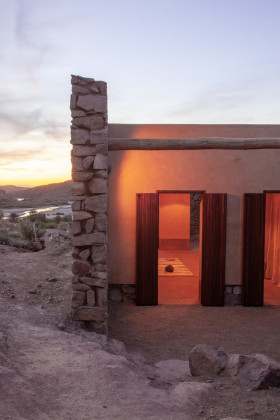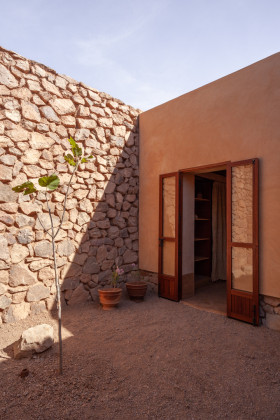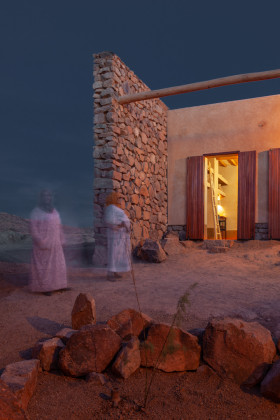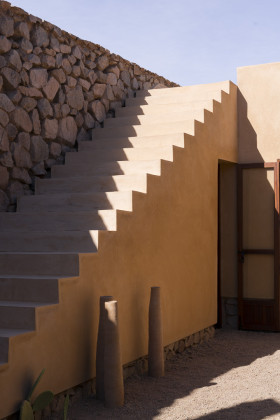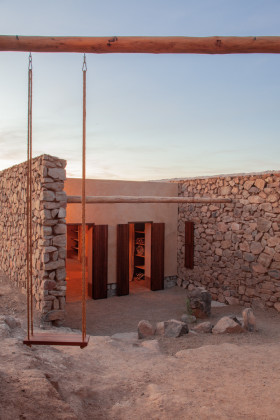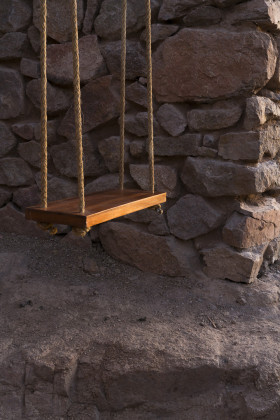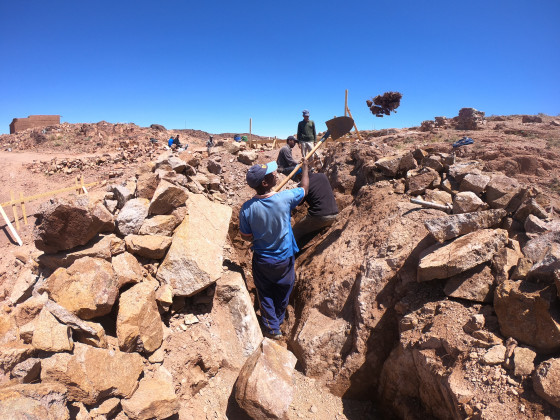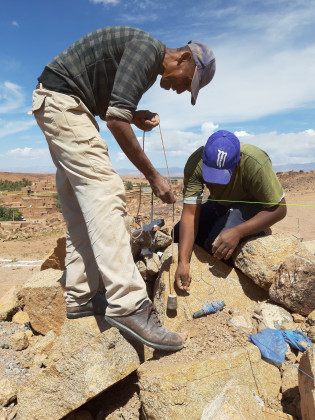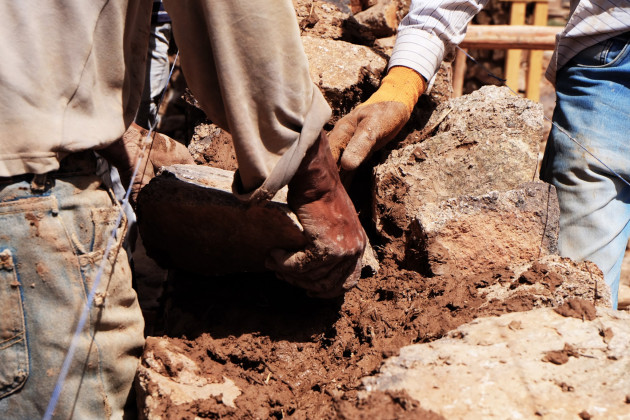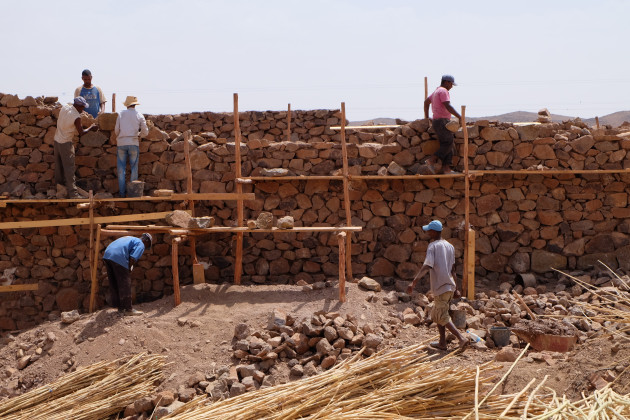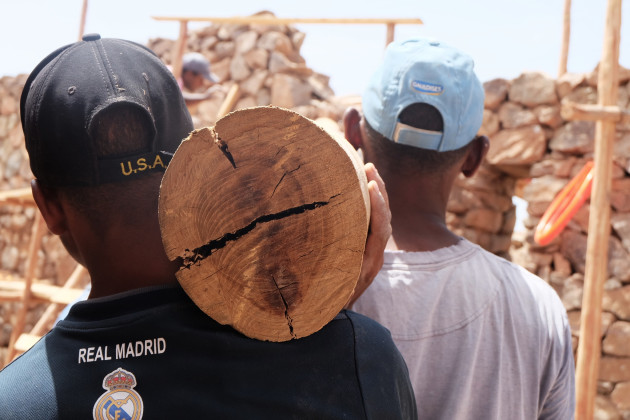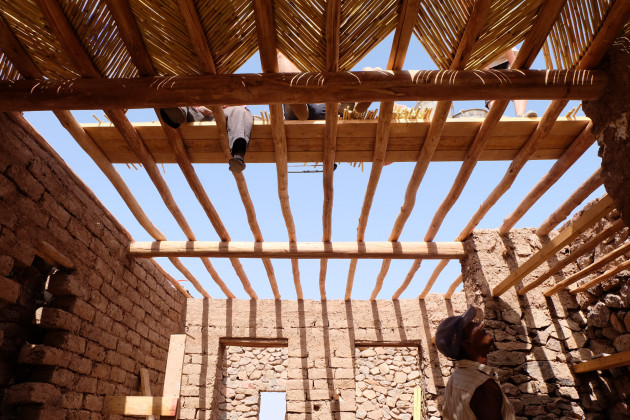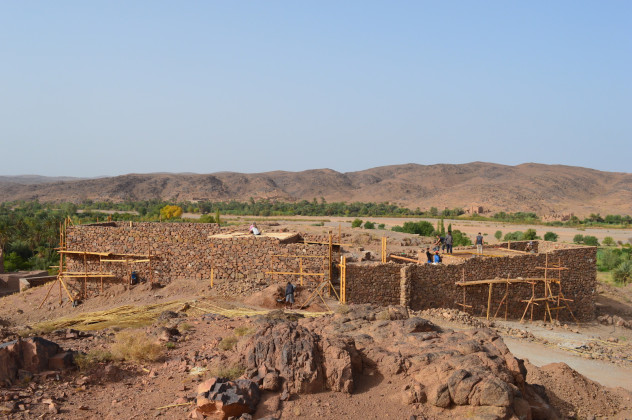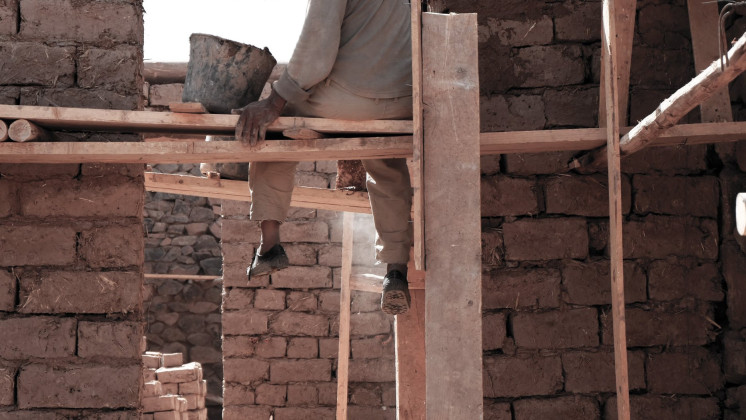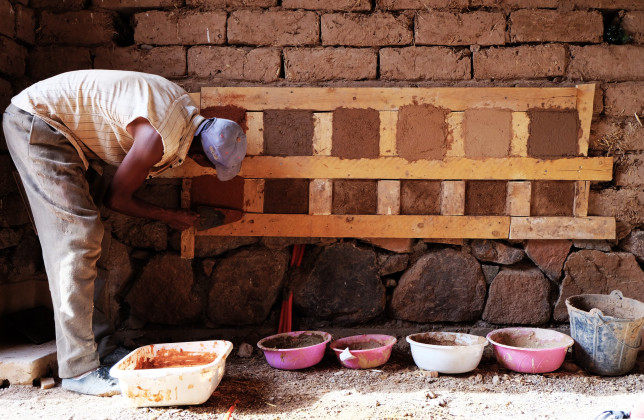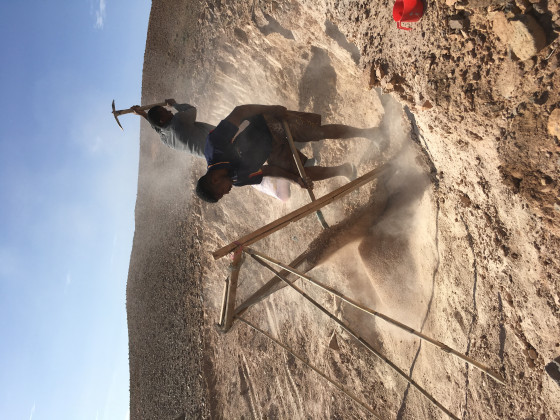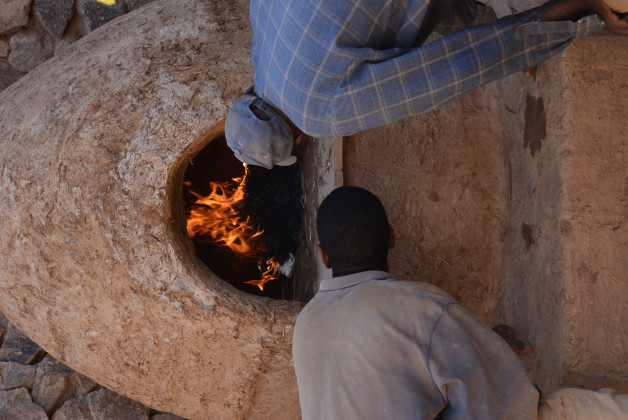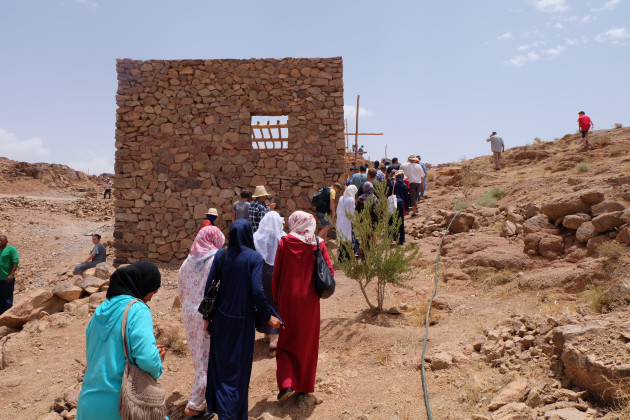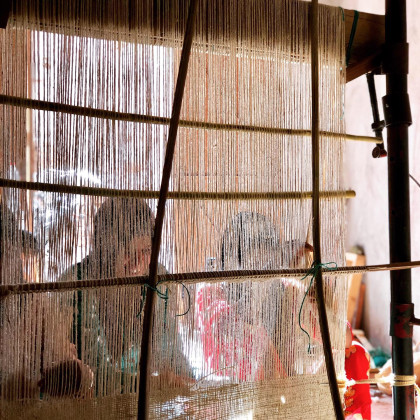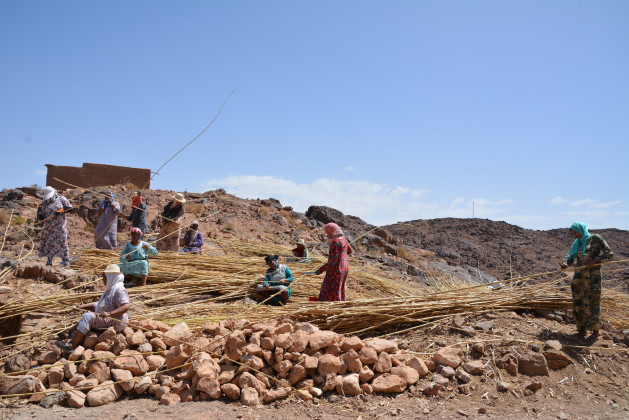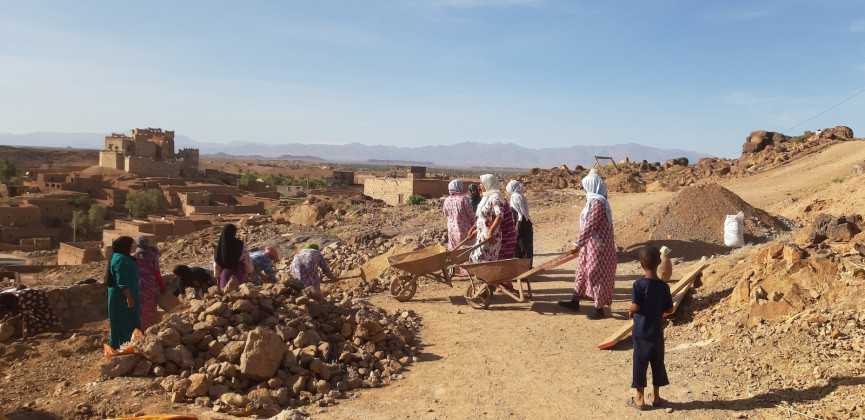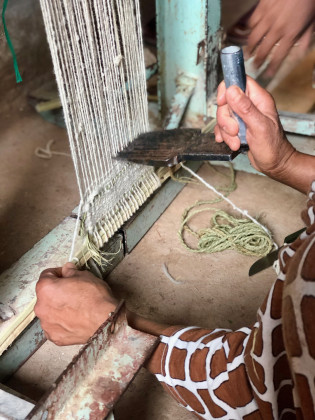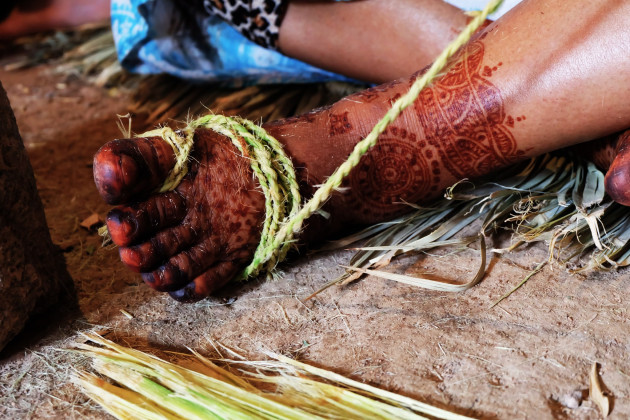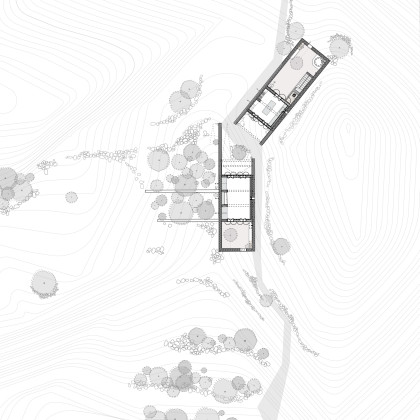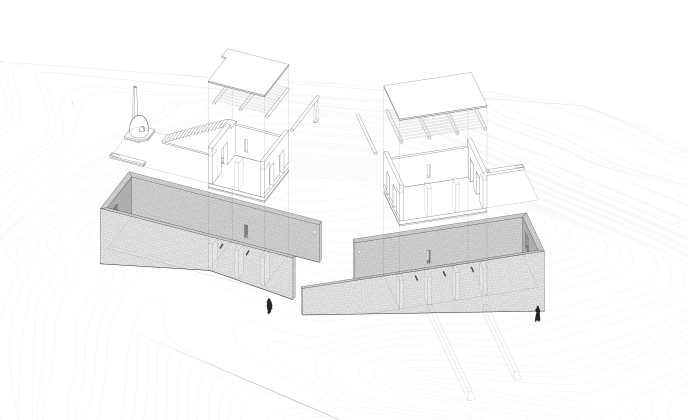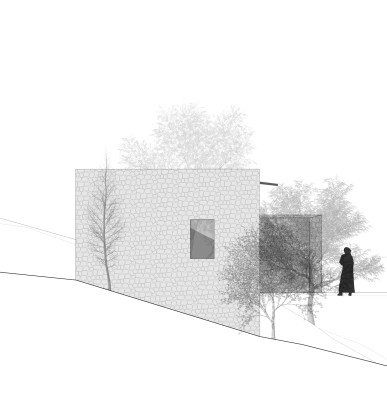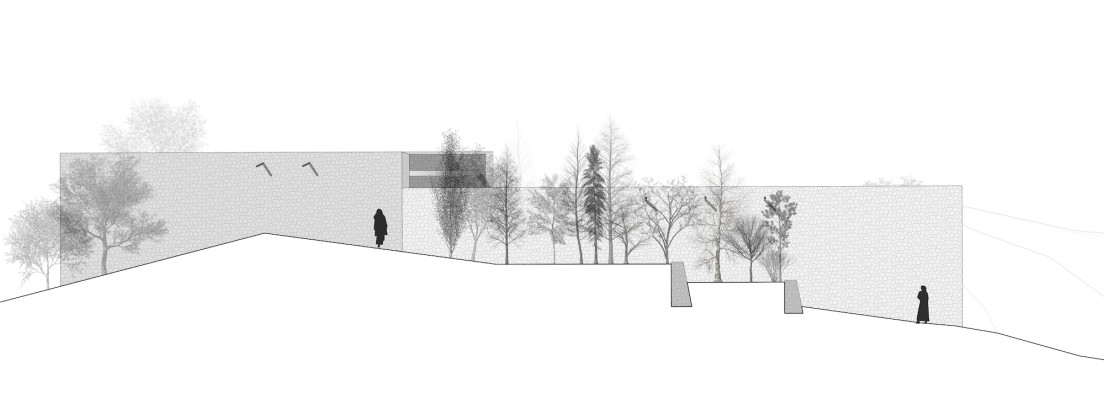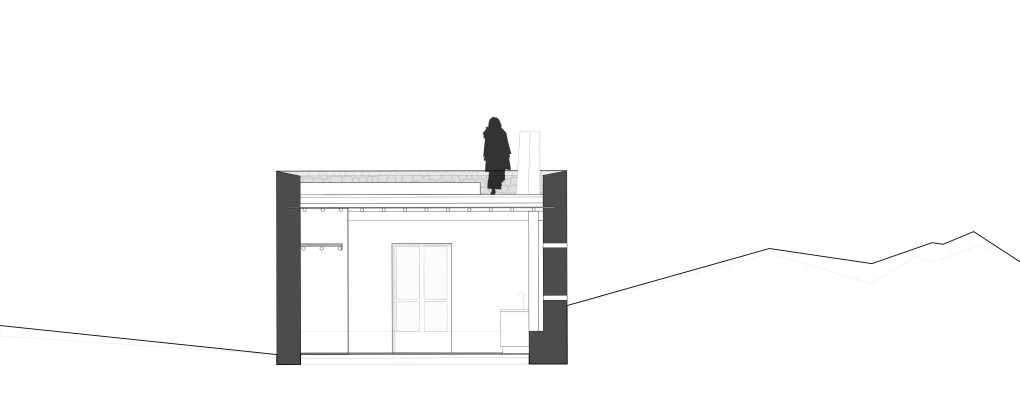From Earth to Women
Comprised of a workshop space and a communal bakery connected with a public courtyard, Women's House in Ouled Merzoug is designed and constructed with and for the women of the area.
In Ouled Merzoug, a small earthen village near the Atlas Mountains of Morocco, a piece of land was offered by the community to the recently founded women’s association AFOM (Association des Femmes d’Ouled Merzoug). Within the postgraduate certificate Building Beyond Borders, organized by UHasselt SEE, the participants designed and built in close collaboration with local women and workers. The end result of this participatory process is a Women’s House: a meeting, working and learning place in the centre of the village. A place where women can share their crafts with the community and visitors. In this project, the limits of sustainable building were challenged by maximizing the use of local and regenerative materials and the confrontation between traditional and contemporary building techniques.
Framework
In September 2018, a team of architects, urban planners, interior architects and artists were brought together for the first edition of the postgraduate certificate Building Beyond Borders of Hasselt University. With a focus on bioclimatic design and responsible material use, the postgraduate consists of tutoring theoretical background and research, project-based learning, hands-on experiments and a real-life design & build project abroad.
For this edition, the question was raised to build a Women’s House in Ouled Merzoug, building further on the already existing relationship between BC Architects & Studies and the local community. In November 2018, the participants went to Ouled Merzoug for the first time to get to know the village and its inhabitants, measure the site and organize workshops with the women to define the programme in collaboration with Harmonie Begon. After an intense design period in Hasselt, the foundation works started in April 2019. In December 2019 the keys were handed over to the Women’s Association.
On the hill, on the crossing of informal paths
The building plot has some particular characteristics. It is located on a slope, in a gully leading the water from the mountains to the agricultural fields of the palm trees -”palmeraie” and the river during periods of heavy rain. Locals walk by regularly, as two main shortcuts run over the site. One path connects the main road and centre of the village with a square for religious festivities and the graveyard, the other one passes by a sequence of important public spaces such as the soccer field, the preschool and the primary school.
A house with two façades
The features of the site were taken as starting points for the implementation and design of the Women’s House. The house is not built in the center of the gully, but along the ridge of the hill. Following the natural topography of the site, the Women’s House consists of two volumes, each positioned in a slightly different direction. In its specific positioning the project seeks connection with both sides of the village. The main façades at the ends of the building capture two beautiful panoramic views: sunrise over the mountains and sunset over the river. The public character of the Women’s House is emphasized by placing the building on the crossing of the two informal paths. The main path leads the villagers directly to the heart of the building.
From center to end, from public to private
The Women’s House is entered through a central meeting place, a public heart, the “cour”. The “cour” connects the two volumes of the house: a workshop space -atelier des femmes- and a communal bakery -boulangerie commune-. The workshop space is a place for meeting, teaching and learning, spinning and weaving. In the communal bakery the women can enjoy sharing meals together, bake and sell homemade breads and pastries. Whereas the center of the building is the most public, the ends are the most private. Each volume gives access to an intimate garden. Apart from being areas for leisure and resting, the gardens are designed and furnished to enhance the program of the adjacent spaces. The large sink in the bench of the workshop garden makes it possible for the women to wash and color wool. In the cob oven in the bakery garden, women can experiment with new recipes.
Building with natural materials, pushing the limits
Maximizing the use of local and natural materials and minimizing the amount of construction waste, were taken as base principles in this project. For the envelope of the building, pieces of granite rock were dug out from the surrounding hills. The inner walls are made out of adobe bricks. While the roof span of the building is based upon the maximum length of the eucalyptus beams that can be found on the local market, the ceiling is made out of reed that grows in the “Palmerie”. As for the finishing of the walls and floors, different mixes of local earth, river sand, lime and straw are used. By the virtue of the close collaboration between skilled local workers and foreign architects, and thereby the confrontation of traditional and new building techniques, it was possible to reinvent and explore new construction details during the building process.
Collaborating with local crafts(wo)men
For the interior of the Women’s House, the collaboration with local craftswomen and craftsmen were key. Here again, local materials were put in the spotlight. The women designed and wove the curtains and helped with building the cob oven in the garden of the bakery. The doors and eucalyptus beams under the kitchen counter were made by local woodworkers. The exterior lamps and ceramic objects were shaped together with the local potter.
The forest garden
Next to the building, in the gully, a forest garden greens the formerly naked rocks. This garden brings biodiversity and shade to the hill site and aims to be a new public space for the village of Ouled Merzoug. Next to that, the terraced garden and its dry stacked walls slow down the running of rainwater. This results in better water infiltration and a reduction of the amount of eroded material flushing towards the main road and further down the ‘Palmeraie’. The different species of native forest trees and shrubs were planted by the team of local workers, women of Ouled Merzoug and other villagers.
Related Content:
-
New Forms of Conviviality
Hulya Ertas talked with Cristina Gamboa, one of the founder members of Lacol, on their approach as an architecture cooperative
-
Participatory Design is the New Black
Cities are complex organisms that are able to develop themselves at an incredible speed and in different conditions.
-

Out-of-the-box
-

Common Goals
-

Building the Future
-
Inter-scale Negotiations
Ezgi Tezcan has talked to Peter Barber over social housings shaped under neoliberal urban politics and possibilities of participatory architecture.
-

Düzce Hope Homes Announced as Finalist of World Habitat Awards 2017
-
One Little Bourgeois Problem: Wanting Very Much but Being Unable to Preserve
More concerned with the practical area than the theoretical area, preservation has the potential to touch the society a little more.
 04.06.2020
04.06.2020



